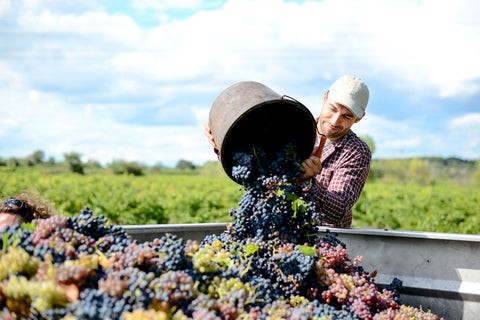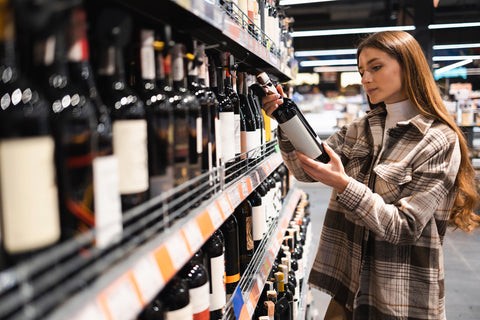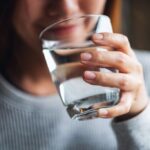Understanding How Much Alcohol Is In Wine, often expressed as alcohol by volume (ABV), is crucial for responsible enjoyment and appreciating its impact on taste and body. Wine alcohol percentage significantly influences the wine’s character, strength, and overall sensory experience, making it essential for both casual drinkers and connoisseurs alike. At HOW.EDU.VN, we aim to provide expert insights that help you make informed decisions about your wine selections.
This article will explore the factors influencing ABV, including grape ripeness, winemaking techniques, and regional differences, offering guidance on selecting wines based on their alcohol content. By grasping these nuances, you can tailor your wine choices to suit different occasions and personal preferences, enriching your overall wine experience with confidence and knowledge, and enhancing your appreciation for various wine styles and alcohol levels.
1. What Is Alcohol By Volume (ABV) in Wine?
Alcohol by Volume (ABV) in wine is the standard measurement of the ethanol (pure alcohol) percentage in a wine. This percentage results from fermentation, where yeast converts grape juice sugars into alcohol and carbon dioxide. Winemakers manipulate this process to shape a wine’s body and alcohol levels.
- Light, crisp wines often have lower ABVs, making them suitable for lighter occasions.
- Bold, full-bodied wines, such as Cabernet Sauvignon, tend to have higher ABVs.
2. What Factors Influence Wine Alcohol Content?
Several factors influence wine alcohol content, primarily the sugar levels in the grapes, winemaking methods, and geographical influences. Understanding these elements can help predict and appreciate the diversity in wine styles and alcohol percentages.
2.1. Grape Ripeness and Sugar Levels
The sugar content in grapes at harvest directly influences the final alcohol content of the wine. Grapes grown in warmer climates, such as those from California or Australia, fully ripen and develop higher sugar levels. As fermentation occurs, these sugars convert into alcohol, leading to wines with higher ABVs. Conversely, grapes from cooler climates, such as Germany or northern France, may have lower sugar levels, resulting in wines with lower alcohol content.
2.2. Winemaking Techniques
Winemakers can control alcohol content through different techniques:
- Fermentation Duration: Longer fermentation periods allow yeast to consume more sugar, increasing the alcohol content.
- Yeast Selection: Different yeast strains have varying alcohol tolerance levels, impacting how much sugar is converted into alcohol.
- Chaptalization: In some regions, winemakers add sugar to the must (unfermented grape juice) to boost alcohol levels in wines made from underripe grapes. This helps balance the flavor, body, and mouthfeel of the wine.
2.3. Regional Differences
Geography significantly influences a wine’s ABV.
- New World Wines: Wines from the U.S., Australia, or Chile typically have higher ABVs due to warmer growing conditions.
- Old World Wines: Wines from France, Italy, or Germany often have lower ABVs, reflecting traditional winemaking practices and cooler climates.
2.4. Wine Style and Category
The wine type, whether sparkling, white, rosé, red, fortified, or sweet dessert wine, also affects its ABV. Fortified wines like Port or Sherry have added alcohol, resulting in ABVs as high as 20%.
2.5. Harvest Timing
The timing of the grape harvest can also affect wine alcohol content. Late harvest wines, for example, often have higher sugar levels, leading to higher alcohol content after fermentation.
3. What is The Alcohol Content Across Different Types of Wine?
Wine ABVs vary significantly depending on the style. Here’s a breakdown in an accessible table format:
| Wine Type | Typical ABV Range |
|---|---|
| Sparkling Wines | 5.5–12.5% |
| Light White Wines | 8–12% |
| Full-Bodied White Wines | 12.5–14.5% |
| Rosé Wines | 11–13.5% |
| Light Red Wines | 11–13% |
| Full-Bodied Red Wines | 13.5–15%+ |
| Dessert Wines | 10–20% |
| Fortified Wines | 16–20% |


This range highlights the diversity of wine styles and their respective alcohol levels:
- Sparkling Wines: Options like Prosecco or California sparkling wine typically have ABVs around 11%, offering a refreshing choice.
- Light White Wines: Examples like Sauvignon Blanc or Pinot Grigio fall in the 8–12% ABV range, showcasing their crisp and vibrant character.
- Full-Bodied White Wines: Styles such as Chardonnay can range from 12.5% to 14.5% ABV, providing a richer profile.
- Rosé Wines: With ABVs from 11% to 13.5%, Rosé wines offer a refreshing lower alcohol option.
- Light Red Wines: These wines, such as Pinot Noir, often range from 11% to 13% ABV and provide a softer flavor profile.
- Full-Bodied Red Wines: Choices like Zinfandel and Cabernet Sauvignon can reach ABVs of 13.5% to 15%+, showcasing their powerful flavors.
- Dessert Wines: Typically ranging from 10% to 20%, they include sweet options like Moscato and late-harvest Rieslings.
- Fortified Wines: Port and Sherry stand out with ABVs up to 20% due to the addition of spirits.
4. How Does Alcohol Content Impact The Taste and Body of Wine?
The amount of alcohol in your glass significantly influences the wine’s sensory profile, affecting its body, sweetness, aromas, and texture.
4.1. Body
Wines with lower alcohol content (e.g., below 12% ABV) often feel lighter on the palate. Higher alcohol percentage wines (e.g., above 14%) are typically full-bodied with rich flavors and a heavier mouthfeel.
4.2. Sweetness and Dryness
While ABV doesn’t directly correlate with sweetness, wines with higher alcohol content may taste sweeter because alcohol can enhance the perception of ripe fruit flavors.
4.3. Aromas and Flavors
Alcohol acts as a carrier for aromatic compounds. For example, Sauvignon Blanc’s citrus and herb aromas are often heightened in wines with moderate ABVs.
4.4. Alcohol’s Role in Texture
Alcohol in wine contributes to its overall texture, also known as the wine’s body. Higher levels typically result in a creamier or more viscous mouthfeel.
5. How Can I Understand ABV Labels on Wine Bottles?
Wine bottles are required to display ABV on their labels, helping consumers understand the wine’s strength and make informed choices.
- Look for ABV on the Label: It’s usually listed as a percentage, such as 12.5%.
- Be Aware of Regional Variations: Legal standards allow for small variations in ABV labeling (e.g., up to 1% in some regions).
- Interpret the Number: Use ABV to predict the wine’s intensity. For example, a Sauvignon Blanc with a 13% ABV will likely be crisp and refreshing, while one closer to 14.5% may feel fuller-bodied and tropical.
6. What About Low- And No-Alcohol Wine Trends?
The demand for low-alcohol and non-alcoholic wines has grown as people seek healthier and more mindful drinking options. These wines typically have ABVs below 10% or are completely alcohol-free.
6.1. Why Choose Low-Alcohol Wines?
- Health Benefits: Lower calorie content.
- Lifestyle Compatibility: Suitable for daytime events or occasions where lighter beverages are preferred.
- Modern Innovations: Advances in winemaking technology have improved the quality of low-ABV and alcohol-free wines.
7. How to Choose and Enjoy Wine Based on ABV?
To fully appreciate and enjoy wine, consider the ABV in relation to the occasion, flavors, and personal preferences.
7.1. Match ABV to the Occasion
- Low-ABV Wines: Perfect for social gatherings or daytime events where a lighter beverage is preferable.
- High-ABV Wines: Best suited for hearty meals or evening celebrations.
7.2. Balance Flavor and Alcohol
Consider the interplay between alcohol and flavor. A wine with high ABV might overwhelm delicate dishes, while a lighter wine may not stand up to rich, bold flavors.
7.3. Use Tools Like Coravin Wine By-The-Glass Systems
Coravin’s wine-by-the-glass systems allow you to pour a single glass without uncorking the bottle. This technology preserves the wine’s freshness, enabling you to enjoy wines of varying ABVs without waste or overindulgence.
8. Frequently Asked Questions About Alcohol Content in Wine
Here are some frequently asked questions to deepen your understanding of alcohol content in wine.
8.1. Does Higher ABV Mean Better Quality?
No, ABV is not an indicator of quality. It reflects the style and winemaking process rather than the wine’s excellence.
8.2. Can Alcohol Content Change Over Time in The Bottle?
No, ABV remains stable once the wine is bottled. However, the perception of alcohol can evolve as the wine ages.
8.3. What’s The Difference Between Dry And Sweet Wines Regarding ABV?
Dry wines may have higher alcohol content due to complete fermentation, while sweet wines often retain residual sugar, which can keep ABVs lower.
8.4. Why Does ABV Vary Within The Same Wine Type?
Factors like region, climate, and winemaking practices cause variations. For instance, Zinfandel from California often has a higher ABV than Zinfandel from Italy.
9. What are The Responsible Consumption Guidelines for Alcoholic Beverages and Health Considerations?
Understanding ABV helps consumers enjoy wine responsibly.
- Know Your Limits: Higher ABVs mean stronger wines, so adjust your consumption accordingly.
- Be Mindful of Calories: Higher ABV wines typically have more calories.
- Use: Experience the freedom to savor wine on your terms with Coravin wine by-the-glass systems. Whether you’re indulging in a single glass or planning to revisit the bottle anytime.
10. Need More Expert Advice on Wine and Alcohol Content?
Navigating the world of wine and understanding alcohol content can sometimes feel overwhelming. If you’re seeking personalized advice or have specific questions about wine selection, pairings, or responsible consumption, HOW.EDU.VN is here to help. Our team of over 100 Ph.D. experts is dedicated to providing you with tailored insights and guidance to enhance your wine experience.
10.1. Benefits of Consulting with Our Ph.D. Experts
- Expert Guidance: Receive advice from leading professionals in wine studies and related fields.
- Personalized Recommendations: Get tailored suggestions based on your preferences and needs.
- Comprehensive Support: We cover a wide range of topics, from understanding ABV to exploring different wine regions.
10.2. How HOW.EDU.VN Can Assist You
- Connect with Experts: Our platform connects you with Ph.D. experts who can answer your specific questions.
- Personalized Consultations: Benefit from one-on-one consultations to discuss your wine-related queries.
- Access to Resources: Explore our extensive library of articles, guides, and resources to deepen your knowledge.
Wine alcohol content is more than just a number on a label; it’s a key element that shapes the wine’s character, taste, and experience. By understanding ABV, you can make informed decisions, enjoy wines that suit your preferences, and appreciate the craftsmanship behind every glass. Whether you’re savoring a light white wine or indulging in a bold red, the journey of exploring ABV adds a new dimension to wine appreciation.
For expert advice tailored to your wine preferences and needs, contact HOW.EDU.VN today. Let our Ph.D. experts guide you to a more informed and enjoyable wine experience.
Contact Us:
- Address: 456 Expertise Plaza, Consult City, CA 90210, United States
- WhatsApp: +1 (310) 555-1212
- Website: HOW.EDU.VN
11. What are The Search Intent of “How Much Alcohol Is In Wine”?
Understanding the search intent behind “how much alcohol is in wine” helps tailor content to meet users’ needs effectively. Here are five key search intents:
- Informational: Users want to understand what ABV (Alcohol by Volume) means in wine and how it is measured.
- Comparative: Users seek to compare alcohol content across different types of wine (e.g., red vs. white, sparkling vs. fortified).
- Practical Advice: Users look for guidance on choosing wines based on their alcohol content for specific occasions or personal preferences.
- Health and Responsibility: Users are interested in the health implications of alcohol content and tips for responsible consumption.
- Trends and Alternatives: Users want to learn about low-alcohol and non-alcoholic wine options.
12. Call To Action (CTA)
Are you finding it challenging to navigate the complexities of wine selection and alcohol content? Do you want personalized advice from experienced professionals? At HOW.EDU.VN, we understand the difficulties in finding reliable and expert guidance. That’s why we offer direct access to over 100 Ph.D. experts ready to provide tailored solutions to your wine-related questions.
Stop wasting time searching through generic information. Contact HOW.EDU.VN today for a personalized consultation and discover the perfect wines that match your taste and occasion. Benefit from our comprehensive support and make informed decisions with confidence.
Contact Us:
- Address: 456 Expertise Plaza, Consult City, CA 90210, United States
- WhatsApp: +1 (310) 555-1212
- Website: HOW.EDU.VN
Let how.edu.vn be your trusted guide to a more informed and enjoyable wine experience.
